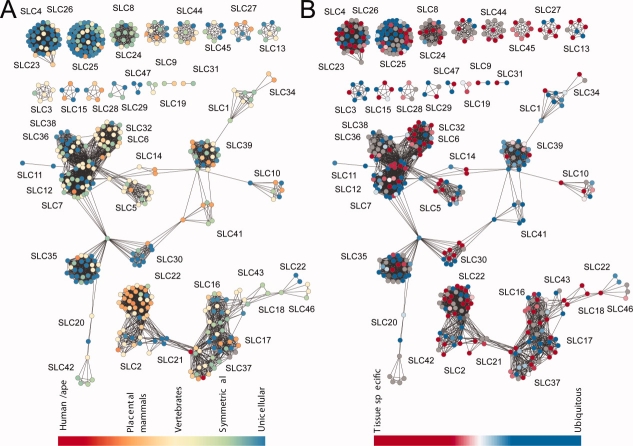Figure 4.
Conservation of solute carriers across eukaryotic organisms and tissues. A: The colors of the nodes indicate the oldest species in which the corresponding transporter is found, ranging from old (blue) to new (red). For instance, most members of the sugar transporter family SLC5 appeared for the first time in symmetrical organisms, whereas most SLC22 members appear only in higher mammals. B: The colors of the nodes indicate tissue specificity of the corresponding transporters, ranging from highly tissue-specific (red) to ubiquitous (blue). For example, SLC32 transporters, which are key proteins for synaptic release of inhibitory amino acids, are highly specific to the nervous system, whereas most members of the mitochondrial transporter family SLC25 are ubiquitously expressed.

